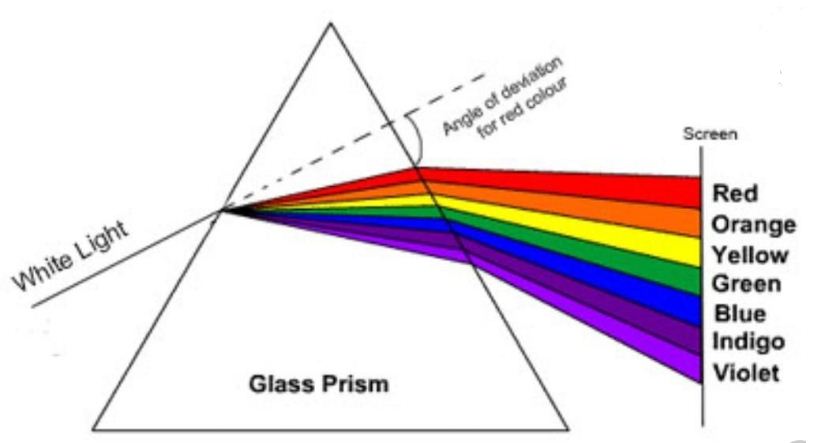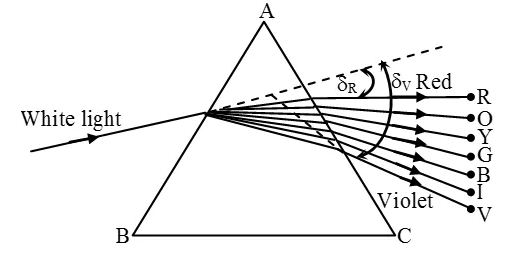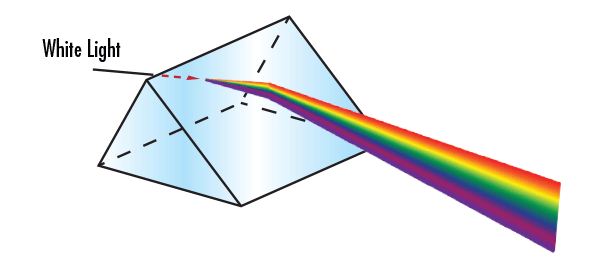Dispersion of Light through a Prism
Last updated on April 21st, 2023 at 09:48 pm
In this post, we will learn what is meant by the dispersion of light. Then we will find out Why white light splits into seven colors when passing through a prism and why the dispersion of light through a prism happens. If these queries are interesting to you then this post will certainly help you to know the reason behind this optical phenomenon. So let’s begin.
dispersion of light
Isaac Newton found that when a beam of light is passed through a glass prism, the white light breaks into constituent colors, i.e., the colors of the rainbow. This phenomenon of splitting up white light into its constituent colors is called dispersion.
From this incident, Newton concluded that white light is a mixture of seven different colors. Here we get introduced to a new term named ‘spectrum’.
Any light that is composed of more than one color is a composite light.
Dispersion is the phenomenon of splitting up of a composite light into its constituent colors. The regular array of colors formed by dispersion is the visible spectrum.

What is spectrum?
Spectrum is the band of colors obtained on a screen on passing a beam of white light through a prism. This spectrum constitutes the colors of the rainbow, i.e., violet, indigo, blue, green, yellow, orange, and red. (VIBGYOR).
reasons or causes of dispersion
Why white light splits into seven colors when passing through a prism? | Why the dispersion of light through a prism happens?
The dispersion or splitting of white light into its constituent colors takes place at the first surface of the prism.
Light of all colors travels at the same speed in the vacuum. But in the other transparent medium, light rays of different colors travel at different speeds because of their different wavelengths.
As lights of different colors have different speeds within the glass prism, therefore they have different values of refractive index(RI) as well. (RI is inversely proportional to speed)
That means, as the white light enters the first surface of the prism, the lights of different colors (components of the white light) face different levels of refraction or bending, i.e. they suffer different levels of deviation (making different deviation angles) from the original direction of the incident ray towards the base of the prism.
Violet color deviates the most, and red deviates the least.
As a result, the lights of different colors present in white light follow different paths inside the glass prism and then strike the second surface of the prism.
On the second surface of the prism, refraction happens (from glass to air) and different colors are refracted through different angles due to their different angle of incidence at this surface. As a result, the colors get further separated on refraction at the second surface.
Finally, the lights of different colors emerge from the prism to air making different deviation angles. Thus, the white light splits into seven colors as it passes through a prism, and these colors spread out to form a spectrum on the screen.

In this post, we have discussed why white light splits into seven colors when passing through a prism and why the dispersion of light through a prism happens.
Here are a few interesting posts you should go through:
Reference
Refracting medium – Prism
Causes of refraction

